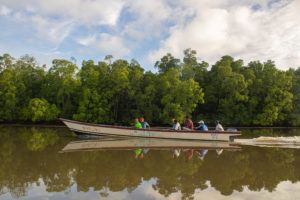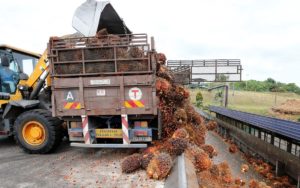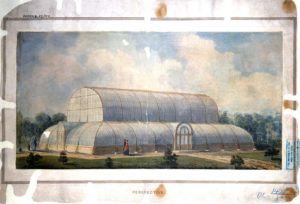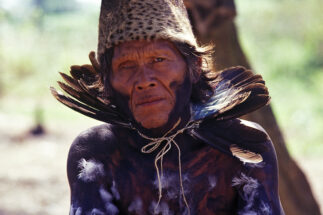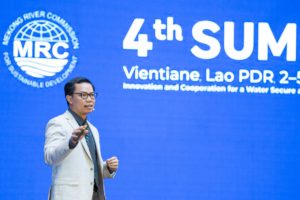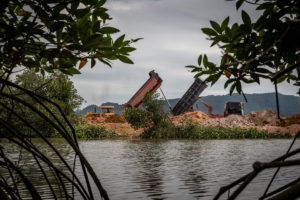The Kinabatangan is the longest river in the Malaysian state of Sabah. Running for 560km through diverse habitats on the island of Borneo, it is home to thousands of species of plants and animals, including the endangered Bornean orangutan and pygmy elephant.
For the past few decades, however, this rich ecosystem has been under threat as the forests surrounding the river have been cleared for timber and oil palm plantations. The floodplains of the Kinabatangan’s lower reaches have suffered some of the worst degradation – the area has lost as much as three-quarters of its native forest since the 1980s.
Efforts are now underway to reverse the damage, by conserving what remains of the rainforest and also through restoration. One such project is Regrow Borneo, a partnership between the UK’s Cardiff University, the Danau Girang Field Centre in the Lower Kinabatangan Wildlife Sanctuary, and community cooperative KOPEL. Working together with local people, the project is planting native trees in degraded areas of riverine and swamp forest. It aims to not only enhance biodiversity by linking up fragmented habitats, but also to help mitigate climate change by removing CO2 from the atmosphere.
Keen to learn more about Regrow Borneo, I met project manager Amaziasizamoria Jumail, better known as Maz. One of the most important parts of her work is measuring how much carbon is being captured by the project’s newly planted trees. Maz and her team measure trees and collect grass, soil and root samples from their five reforested plots. Initial results from this work have been positive – two sites removed an average of six to seven tonnes of carbon per hectare over the course of a year.
During my five days with the team, I followed Maz and her fellow researchers as they carried out this and other fieldwork. The conditions were hot and humid, and we had to trek through dense forest and tall grasses to reach some of the sites. Twice Maz had to “rescue” me when my shirt got caught on thorns, though there was nothing she could do to stop the swarming mosquitos while I tried to steady my camera.
Back at the Danau Girang Field Centre, electricity was only available for a few hours a day. We spent the nights in pitch black listening to the sounds of the forest outside.
Despite these arduous conditions, the sight of the sun glistening through the giant trees every morning made it all seem worthwhile. Then there was the wildlife living around the centre: the proboscis monkeys, the hornbills. And of course, the majestic Kinabatangan River itself. Travelling to the research sites every day by boat was a truly amazing experience.
Although deforestation remains a threat to the ecosystem of the Kinabatangan basin, projects like Regrow Borneo are a beacon of hope. Maz and her team have so far rehabilitated about 18 hectares of forest, and they aim to restore an additional 12 hectares each year going forward. In addition, by working with community group KOPEL, the project is demonstrating how scientific research and expertise can align with the knowledge and experience of local people. It also provides local people with an alternative source of income in an area dominated by oil palm agriculture.
For Maz herself, the local focus of Regrow Borneo is especially significant. Born and raised in Sabah and now studying for a PhD as part of her work with the project, she aspires to be part of a new generation of local scientists, dedicated to restoring the precious ecosystem of the local area.
Production credits:
Filmed and edited by Chen Yih Wen
Sound design by Digital Orange
Special thanks to the Danau Girang Field Centre and KOPEL
Music:
“August (Summer Nights)” by Kai Angel, CC BY NC
“Tratak” by Jesse Gallagher, YouTube Audio Library Licence
Copyright notice:
This video is released under the Creative Commons Attribution Non-Commercial licence. Should you wish to share or make use of it, please respect the terms of this licence. For a free copy please contact us: [email protected]. A clipreel of the footage is also available on request.


